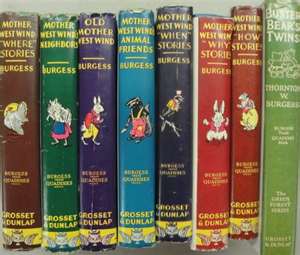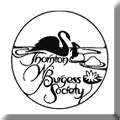
(This blog post originally appeared in the Connecting Children to Nature Through American Literature Blog at: www.http://childnatureamericanlit.blogspot.com/
Old Mother West Wind Blew Me Away – by Peggy Christian
When I was five years old my parents and I spent the summer in a tent at a remote Colorado gold mine. Over the course of the summer my father read me all of Thorton Burgess’s books, starting with Old Mother West Wind and then on to Buster Bear, Reddy Fox, Jimmy Skunk, etc. These were more than good bedtime reads to my father, they had been his childhood favorites. Born in 1911, the same year Old Mother West Wind was written, my father eagerly awaited the publication of the next in the series. He wanted to share with me the deep connection to the natural world these books had given him.
Going back to the books fifty years later, having read them to my boys and then stored them in the attic for future grandchildren, I was surprised to see how well they stand up. Yes, the language is dated, but they have a lovely oral storytelling quality that I’ve missed in some modern children’s stories. And I know the anthropomorphism is very out of date—shunned by all enlightened writers of children’s books today. Still, I would argue that instead of making children see animals as human, it engages their imaginations, encouraging them to relate to animals in a deeper way than most non-fiction books, which make us see the natural world as something to be studied and protected, but not something we are a part of.
Being an only child, there were no other kids to play with at our camp, but I never felt lonely because Chatterer the Red Squirrel greeted me (or scolded me—I was never sure), every morning. And Paddy the Beaver lived just down the creek in the pond he’d built. Every time I ventured near, he would slap his tail and scare me to death.
Burgess was a naturalist and conservationist and he based his animal’s characteristics on his own close observations of their behavior. This encouraged me to watch as well. After hearing the story of Sammy Jay, I sat out by the campfire observing the gray jays as they chattered in the trees and snooped around camp for any loose crumbs.
I also remember how Burgess named the places in the landscape of his stories—The Great Woods, The Green Meadow, The Smiling Pool and the The Laughing Brook. I too named the places where I played– the creek with the wild watercress, Sandwich Creek, or the willow bushes by the pond Willow Cottage after I cut away a secret little den inside the tangle of branches. My mother helped me draw a map and the woods felt like home.
Burgess encouraged his readers to engage imaginatively in the natural world. In fact, he said that the imagination is “the birthright of every child.” And I hope to do the same in the stories I write for children.

